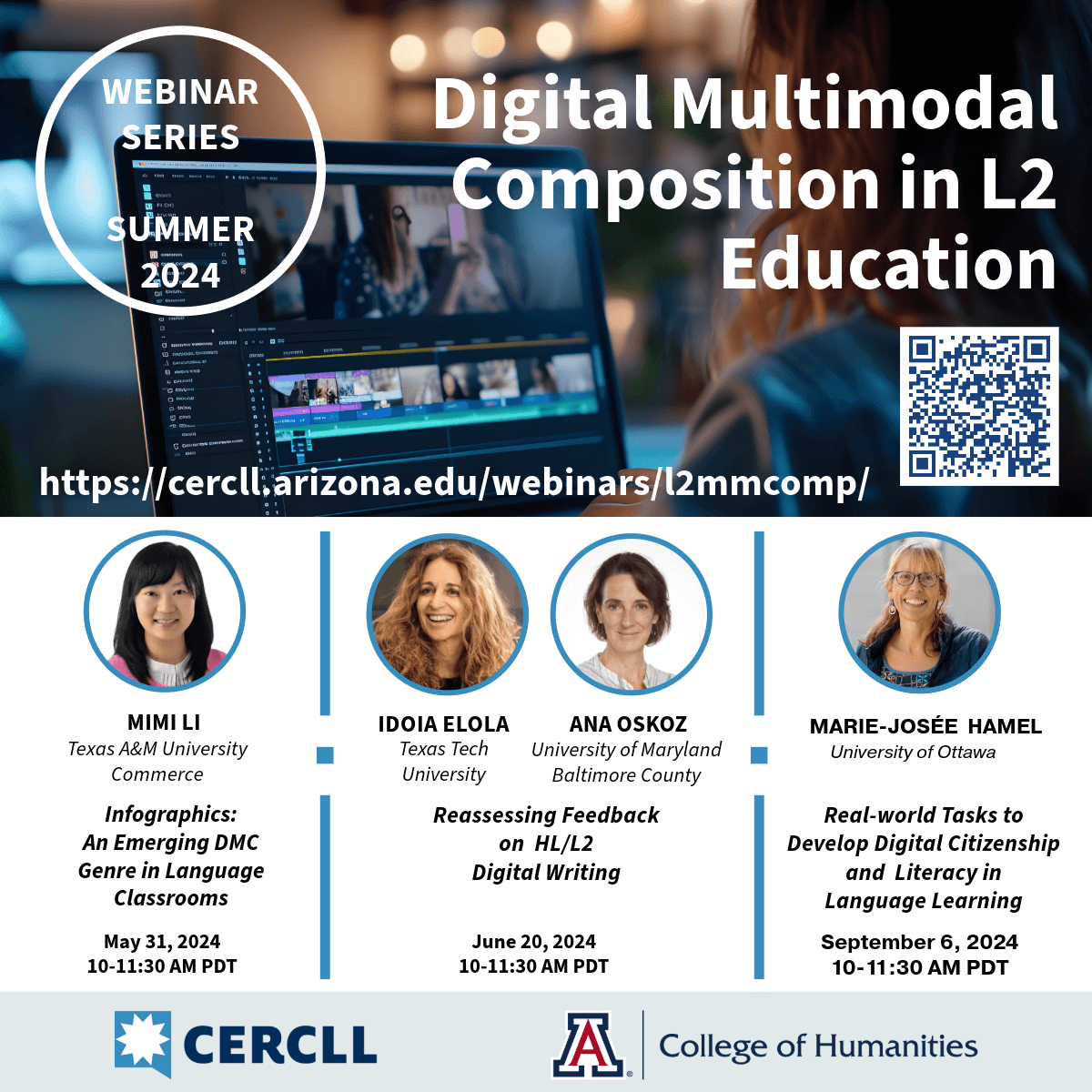
Digital Multimodal Composition in Language Education
The call to broaden our understanding of literacy is not new. Over the past 20 years, scholars have been calling for the need to extend the range of literacy practices by bringing new forms of representation and communication, especially those of the digital age, into the L2 classroom. This call reflects a view of communicative competence which today is understood as multimodal communicative competence. The multimodal turn in language education is an outcome of the dramatic change in the communicative landscape of our digital age in which language is co-deployed with other semiotic resources and meaning is made multimodally. This means that in order to meet the current needs of L2 learners, the curriculum cannot remain just language-focused and the teaching and learning of a language must go beyond print to include both print and screen in order to prepare learners to view multimodal texts critically and communicate effectively through multimodal representations.
Click on the titles below to access the recordings, slides and resources for the webinars in this series.
You can also view all the recordings in our YouTube webinar playlist!

Mimi Li
(Texas A&M University, Commerce)
Infographics: An Emerging DMC Genre in Language Classrooms
In this webinar, Dr. Li draws upon her own research and personal experiences to explore the multifaceted role of infographics within language classroom. It will be a valuable opportunity for participants to expand their understanding of infographics and gain insights into effective pedagogical practices for implementing infographics in their instructional contexts.
Some of what attendees told us they found most beneficial about this webinar:
Mostly the way the presenter gave us tips in order to make a significant infographic as well as to grade it.
The webinar is absolutely helpful in setting a strategy that meets the modern methods in teaching which focus on emerging technology in teaching. What was most beneficial is the detailed instruction on how to use the technique in different fields of teaching.
The presenter gave a comprehensive overview of the use of infographics in the classroom. She also presented some rubrics for evaluating them.

Idoia Elola
(Texas Tech University)
Reassessing Feedback on HL/L2 Digital Writing
In this talk, Drs. Elola and Oskoz present theoretical approaches (e.g., social-semiotic theory and activity theory) that relate to digital feedback. The presentation focuses on providing rationale for expanding the use of feedback to cover the linguistic and nonlinguistic components encountered in a multimodal text.

Ana Oskoz
(University of Maryland)
[This webinar] helped me in learning how to use AI to avoid time – consuming tasks and accomplish more tasks in an easier way and provide constructive feedback that help students interpret their mistakes.
Everything was highly important and I loved that the presenters were engaging with the audience.
The presenters were very knowledgeable and I liked how they made it interactive/took our feedback/comments/questions. Felt more like a discussion. I liked the ChatGPT activity.

Marie-Josée Hamel
(University of Ottowa)
Infographics: An Emerging DMC Genre in Language Classrooms
In this webinar, Dr. Hamel:
- introduces a pedagogical framework (Ollivier et al., 2021) that promotes active, participatory, transformative, and reflective learning through tasks conducted on open digital platforms.
- defines the concept of real-world tasks (RWT) and demonstrate various RWTs from the online resources developed by the eLANG Citizen team.
- invites participants to try RWTs and then imagine how they could integrate them into their own context of teaching.
- gives an opportunity to participants to think creatively and critically about the concept of digital citizenship in the context of language education and specifically how it can be operationalized through RWT putting them at the forefront authentic social interactions.
New and innovative ideas; clear speech and presentation style; clear and well-organized PowerPoint; sharing the PowerPoint; practical and useful tasks; amazing resources.
It was very helpful because not only it presented resources but also provided examples on how to use those resources.
I found the interactive sections of the presentation with opportunities to ask questions most beneficial.

